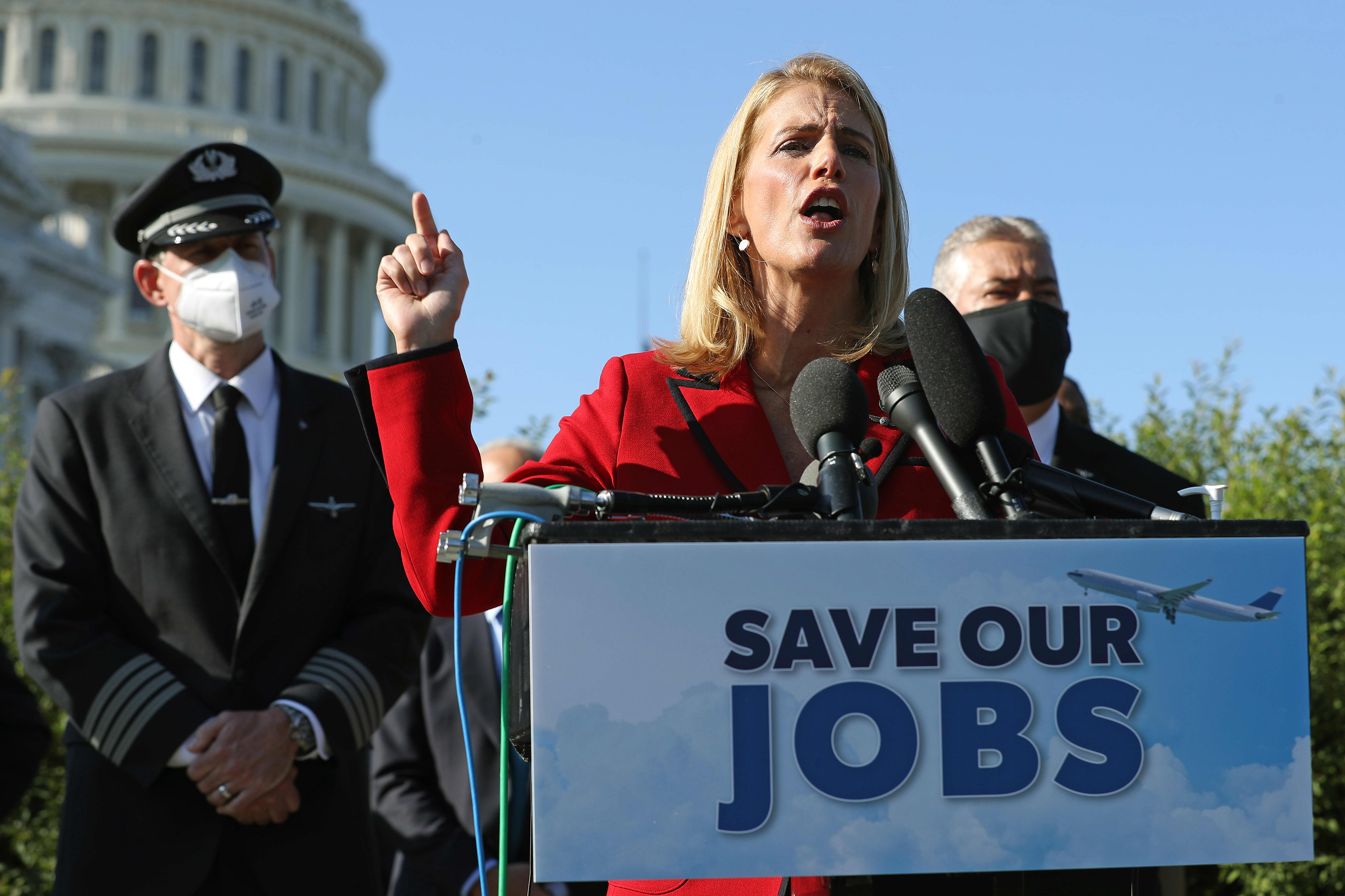Airlines are hours away from cutting more than 30,000 jobs without billions more in federal aid

Association of Flight Attendants International President Sara Nelson joins airline executives, fellow union heads and political leaders to call on Congress to pass an extension of the Payroll Support Program to save thousands of jobs, during a news conference outside the U.S. Capitol September 22, 2020 in Washington, DC.
Chip Somodevilla | Getty Images
The terms of billions in federal airline aid expire early Thursday, setting the stage for more than 30,000 job cuts.
Airline executives including the CEOs of American, United, Southwest and JetBlue have been making last-ditch attempts in Washington to persuade lawmakers and Trump officials to provide additional aid as the job cuts loom as early as this week.
“This isn’t about raising funds for the airline,” American Airlines CEO Doug Parker told CNBC’s “Squawk Box” on Wednesday. “This is about keeping the infrastructure in place by having us be paid to pass on to our team members who we otherwise don’t have work for to keep them in place.”
The CARES Act Congress passed in March included $25 billion — mostly federal grants — for passenger airlines to pay workers through Sept. 30, in hopes that a recovery in travel demand would materialize this summer. It didn’t. Airport statistics show demand stuck at around 30% of last year’s levels and carriers continue to bleed cash. Airline executives don’t expect a return to 2019 volumes for several years.
The proposal for additional aid has won bipartisan support from lawmakers and the Trump administration but the two sides haven’t reached an agreement on a new national coronavirus bill. A $2.2 trillion package unveiled by House Democrats on Monday includes the additional airline aid, and talks have progressed with the White House in recent days.
Airlines’ other relief: Their own workers
American and United make up the lion’s share of involuntary job cuts. Across the industry, the headcount reductions were expected to be much deeper, but airlines won another reprieve from their employees.
Some workers agreed to reduced schedules that mean smaller paychecks. United, for example, reached a last-minute deal with its pilots for lower minimum-hour guarantees that would prevent planned furloughs of close to 4,000 pilots until at least June.
Separately, at their employers’ urging, tens of thousands volunteered for unpaid and partially paid leaves of absence or opted for early retirement packages that included cash payments and continued health care, a selling point during a pandemic.
So many signed up that Southwest doesn’t expect to have to cut jobs this year, and most of Delta’s workers will also escape furloughs or layoffs except for pilots, who are negotiating cost-cutting measures with the carrier. Delta has also lowered its labor costs by cutting most workers’ schedules by 25%.
Those reductions could help another round of aid go further for airlines.
“The larger reductions in headcount achieved from voluntary retirement or other separation programs through this month will further lower labor expense relative to the 2019 third quarter component of the CARES Act base,” Moody’s Investors Service said in a note Tuesday.
Many workers, however, opted to wait to see what happened or didn’t have a retirement option.
One junior pilot set to be furloughed at American Airlines-owned regional carrier PSA Airlines said he received a $10,000 bonus when he started less than a year ago, showing the stark turnaround for an industry that couldn’t hire some workers fast enough just before the pandemic started. He said he was going to get almost the same amount when he finished his first year.
Now the pilot, who spoke on the condition of anonymity because he isn’t authorized to speak to the media, is sending out resumes to a dozen airlines, including charter carriers.
“I’d love to stay back in aviation, but the market is just so saturated,” he said. The pilot is now preparing to hand in his crew-issued iPad and badge.
“We pay for our own uniforms,” he said. “I hope I get to use it again soon.”




